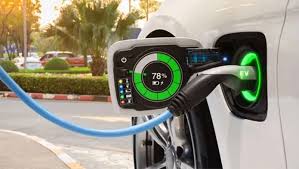The automotive industry has witnessed monumental shifts over the past century. From the early days of steam-powered vehicles to the mass production of gasoline-powered cars, we’ve come a long way. Yet, nothing compares to the revolutionary surge of electric vehicles (EVs) in the 21st century. These vehicles are not just changing the way we drive; they are redefining the very essence of transportation, contributing significantly to the reduction of emissions and the overall environmental impact of the automotive world.
In recent years, environmental concerns have become a pressing issue, driving both policy and consumer demand for cleaner alternatives to traditional gasoline-powered vehicles. At the forefront of this movement are electric vehicles, which are rapidly gaining traction across the globe. Whether it’s the environmental impact of fossil fuels or the efficiency and sustainability of green technologies, EVs represent a fundamental shift in how we think about transportation.
The Rise of Electric Vehicles: A Paradigm Shift
Electric vehicles have steadily gained popularity in both consumer markets and governmental agendas. Initially, the high cost of production and concerns about battery technology limited their appeal. However, over the years, advancements in battery technology, alongside growing environmental awareness, have turned EVs into a mainstream choice for eco-conscious consumers. As governments around the world continue to impose stricter emissions regulations, car manufacturers are being pushed to innovate faster and offer more affordable electric alternatives.
EVs promise a future of cleaner, more sustainable transportation. Traditional vehicles powered by internal combustion engines are significant contributors to air pollution and greenhouse gas emissions. The shift toward electric cars offers an effective solution to reduce these harmful emissions, directly addressing some of the most pressing environmental concerns of our time. By reducing our reliance on fossil fuels, EVs are helping mitigate climate change, a challenge that impacts both urban and rural areas globally.
The Environmental Impact: A Cleaner Future
One of the main driving forces behind the electric revolution is its potential to dramatically lower carbon emissions. Unlike their gasoline-powered counterparts, electric vehicles produce zero tailpipe emissions, which translates to cleaner air, especially in densely populated urban areas. This reduction in harmful pollutants such as nitrogen oxides and particulate matter has significant health benefits, contributing to a decrease in respiratory illnesses and improving the overall quality of life for residents in cities worldwide.
Beyond just the emissions during operation, the entire life cycle of an EV—from production to disposal—holds the potential for reducing environmental impact. Although the production of electric vehicles, particularly their batteries, does involve energy use and material extraction, efforts are underway to make these processes more sustainable. Companies are investing in renewable energy sources to power manufacturing plants, and recycling programs are being developed to handle the lifecycle of EV batteries, which could further reduce their environmental footprint.
Technology Driving the Electric Revolution
The core of any electric vehicle is its battery. Over the years, battery technology has improved by leaps and bounds, offering greater energy density, faster charging times, and longer lifespans. The advent of lithium-ion batteries marked a breakthrough, but now manufacturers are exploring alternatives, such as solid-state batteries, which promise even greater efficiency and safety.
Charging infrastructure is another crucial element in the widespread adoption of electric vehicles. As governments and private companies expand the number of charging stations, the convenience and practicality of owning an EV have improved. Fast-charging networks, which allow drivers to recharge their vehicles in a matter of minutes rather than hours, are key to making electric cars viable for long road trips and daily commutes alike.
Electric Vehicles vs. Traditional Cars: A Comparative Analysis
When comparing electric vehicles to traditional gasoline-powered cars, the most obvious difference is in the environmental impact. EVs are significantly cleaner during operation, producing no emissions at the tailpipe. This is a stark contrast to conventional vehicles, which release a range of harmful pollutants into the air. The shift towards electric vehicles represents a huge step toward reducing global emissions, contributing to a cleaner and healthier environment.
However, when considering the full picture, electric vehicles are not entirely free from environmental impact. The production of EVs, particularly the batteries, does require energy, and the mining of materials like lithium, cobalt, and nickel can have environmental consequences. Despite this, the overall emissions over the lifespan of an electric vehicle are much lower than those of traditional cars, particularly when paired with a grid powered by renewable energy sources.
Economic Implications: Job Creation and Industry Transformation
The rise of electric vehicles is reshaping the automotive industry, creating new opportunities and challenges in the process. Traditional car manufacturers are pivoting to EV production, investing billions of dollars in research, development, and manufacturing capacity. The switch from fossil fuel-based vehicles to electric ones will undoubtedly have a profound impact on global economies, particularly those with large automotive sectors.
As electric vehicle production increases, so too does the demand for skilled workers in fields such as battery technology, engineering, and renewable energy systems. The growth of the EV market is expected to create hundreds of thousands of new jobs worldwide. However, the transition may also lead to job losses in sectors that depend on the production of traditional vehicles and fossil fuels. Governments and businesses will need to focus on providing retraining and transition programs for workers affected by this shift.
The Role of Policy and Government Incentives

Government policies play a crucial role in driving the adoption of electric vehicles. In many countries, there are now generous incentives and rebates for consumers who choose to purchase an EV. These incentives, which can include tax credits, subsidies, and rebates, help to offset the higher initial cost of electric vehicles, making them more affordable for the average consumer. In addition, many governments are implementing stricter emissions standards for traditional vehicles, further incentivizing the shift to electric mobility.
In addition to financial incentives, governments are also investing in the expansion of charging infrastructure. Public-private partnerships are helping to build a robust network of fast chargers, making it easier for EV owners to travel long distances and charge their vehicles at convenient locations. These efforts are critical to overcoming the barriers to widespread EV adoption and ensuring that electric vehicles become a viable option for all consumers.
Challenges Facing the EV Industry
Despite the promising future of electric vehicles, the industry faces several challenges that could hinder its growth. One of the main obstacles is the relatively high upfront cost of EVs, which remains a barrier for many potential buyers. While prices have dropped over the years, electric vehicles are still generally more expensive than their gasoline counterparts, particularly when factoring in the cost of the battery.
Another challenge is the limited range of some electric vehicles, especially when compared to traditional gasoline-powered cars. Although the range of EVs has steadily increased, some consumers are still concerned about the availability of charging stations and the convenience of long road trips. This concern is gradually being alleviated as charging infrastructure continues to grow, but it remains a point of consideration for many consumers.
The Future of EVs: What’s Next?
The future of electric vehicles looks incredibly bright. With technological advancements, government support, and increased consumer demand, EVs are set to become even more accessible and efficient in the coming years. Battery technology will continue to evolve, leading to faster charging times, longer ranges, and more affordable prices. Additionally, as renewable energy sources become more widespread, the environmental benefits of electric vehicles will be further amplified, contributing to a more sustainable future for transportation.
As more manufacturers enter the electric vehicle market and competition intensifies, the variety of EVs on the market will increase. Consumers can expect a wider range of models, from budget-friendly options to high-performance electric sports cars. The automotive landscape is changing rapidly, and the electric revolution is at the heart of this transformation.
Conclusion: Emissions-Free Future in the Making
Electric vehicles are no longer a distant dream but a present-day reality that’s transforming the automotive landscape. They offer a solution to the environmental challenges posed by traditional gasoline-powered cars, providing a cleaner, more sustainable alternative. While the road to full adoption may have its hurdles, the benefits of EVs are undeniable. From reducing harmful emissions to reshaping the global economy, the electric revolution is not just about cars—it’s about creating a better, cleaner future for generations to come.
As the world continues to embrace electric vehicles, there’s no denying that the future of transportation will be electric, emissions-free, and powered by innovation.
